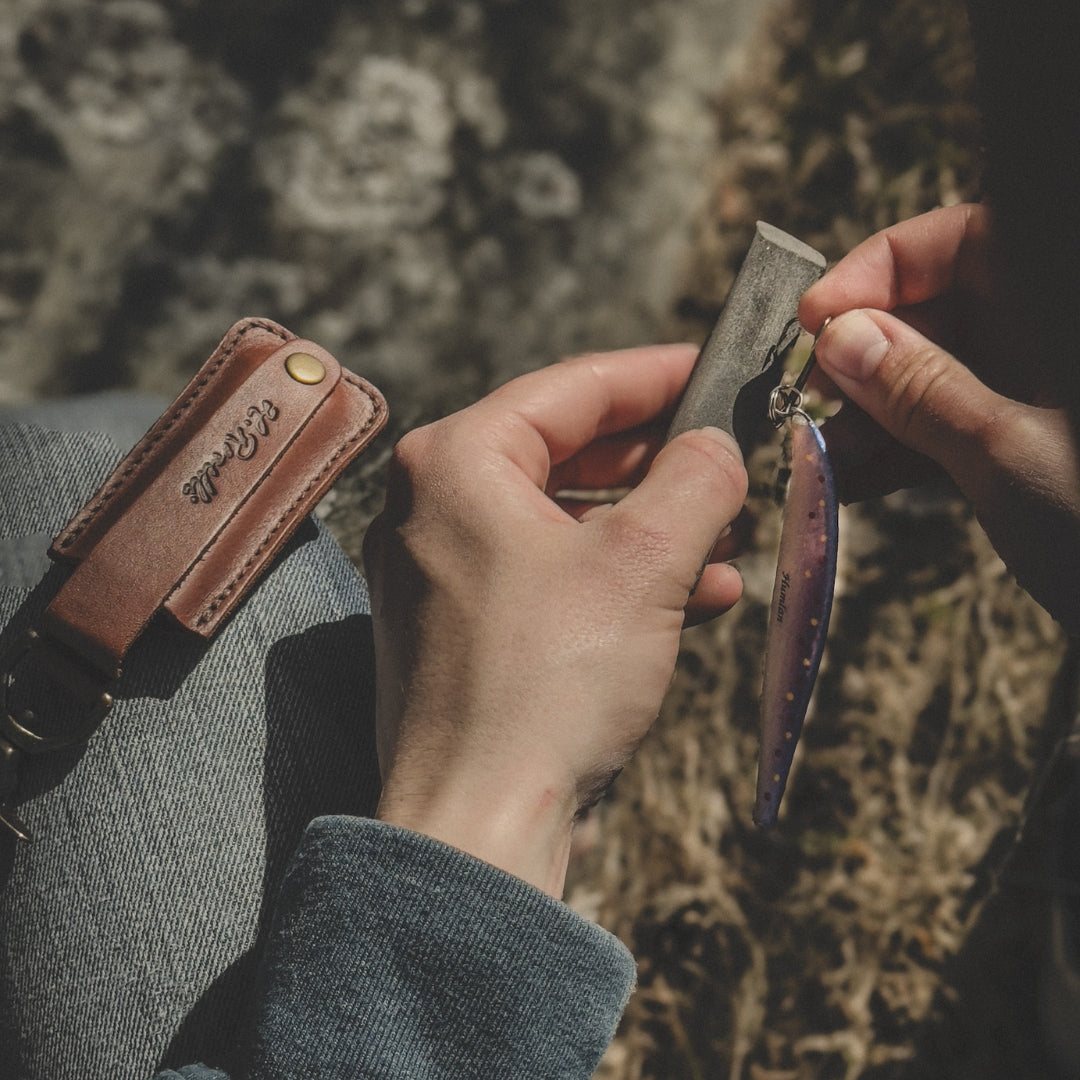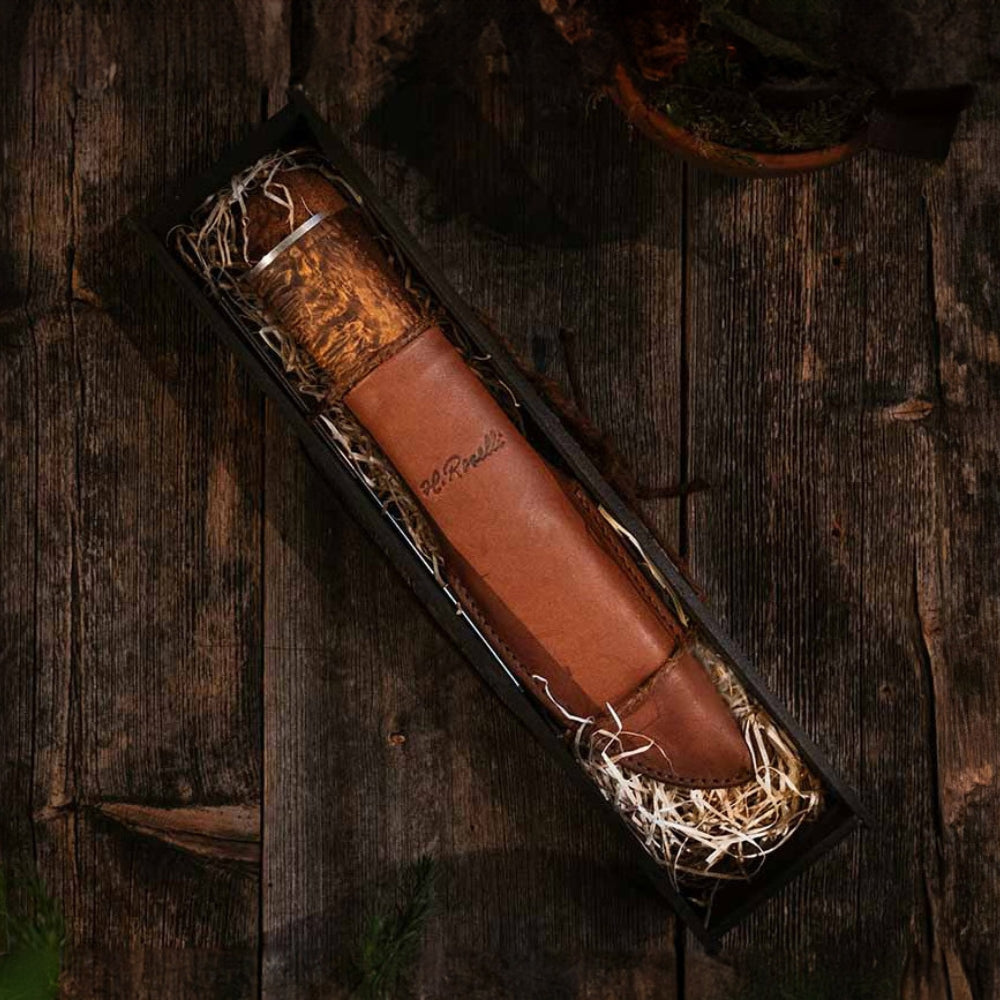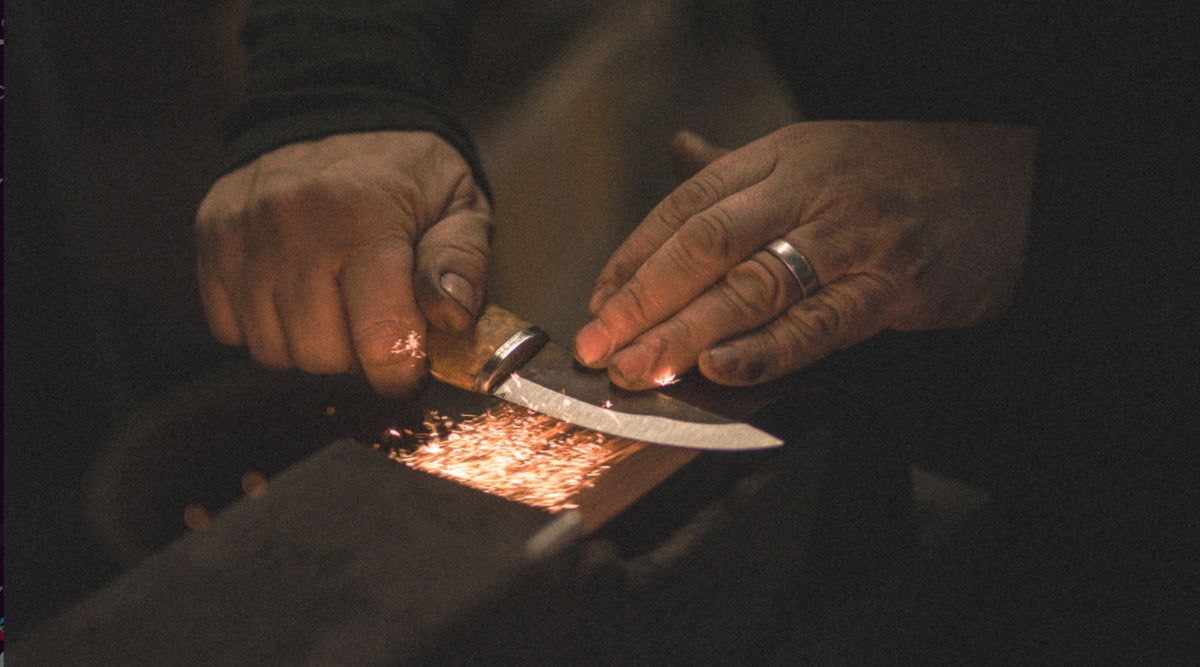
Care & Repair
Our knives are crafted to withstand extensive use over time. However, even the finest tools require proper maintenance and care to ensure longevity. Below, we'll guide you through essential steps to keep your knife in peak condition, ready for any task you throw its way.
Instructions for day-to-day honing
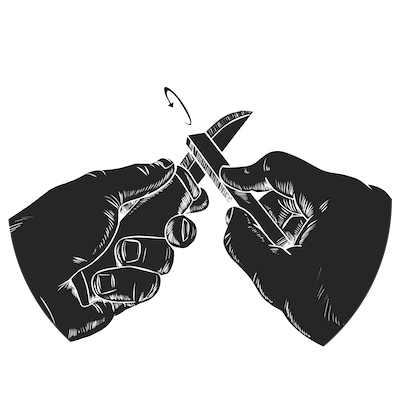
Step 1
Start by honing the blade with gentle circular motions. It is important to keep the angle fixed at the original blade angle, do this until there are some burrs on the opposite edge.
Repeat the procedure on the other side until you feel the burr on the first side. You have now established a straight edge.
Use a fine grit diamond, steel or stone tool. When out in the field we recommend carrying a diamond sharpening tool if you need to sharpen your knife. At home you can use your own preferred sharpening tool.
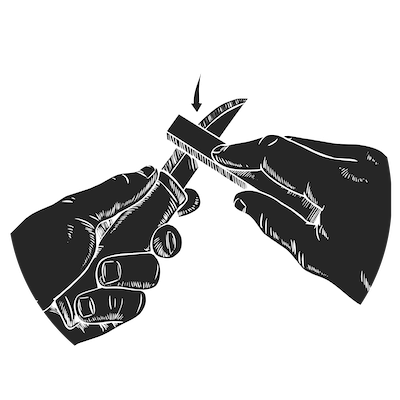
Step 2
Finalise the blade by removing the small amount of remaining burr. Working along the full length of the blade, gently pull the tool towards you, at a steeper angle than the initial honing. Work along the full length of the blade.
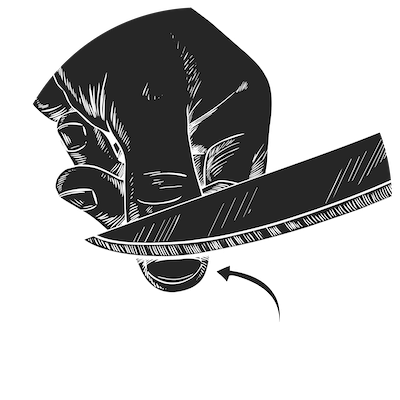
Step 3
To verify that the blade is sharp, gently scratch the edge on your fingernail. You should feel directly whether the knife is sharp or not. If done with care, this is a reliable and fairly safe way to test the sharpness of your knife.
-
- Choosing a selection results in a full page refresh.
- Opens in a new window.
CloseClose


